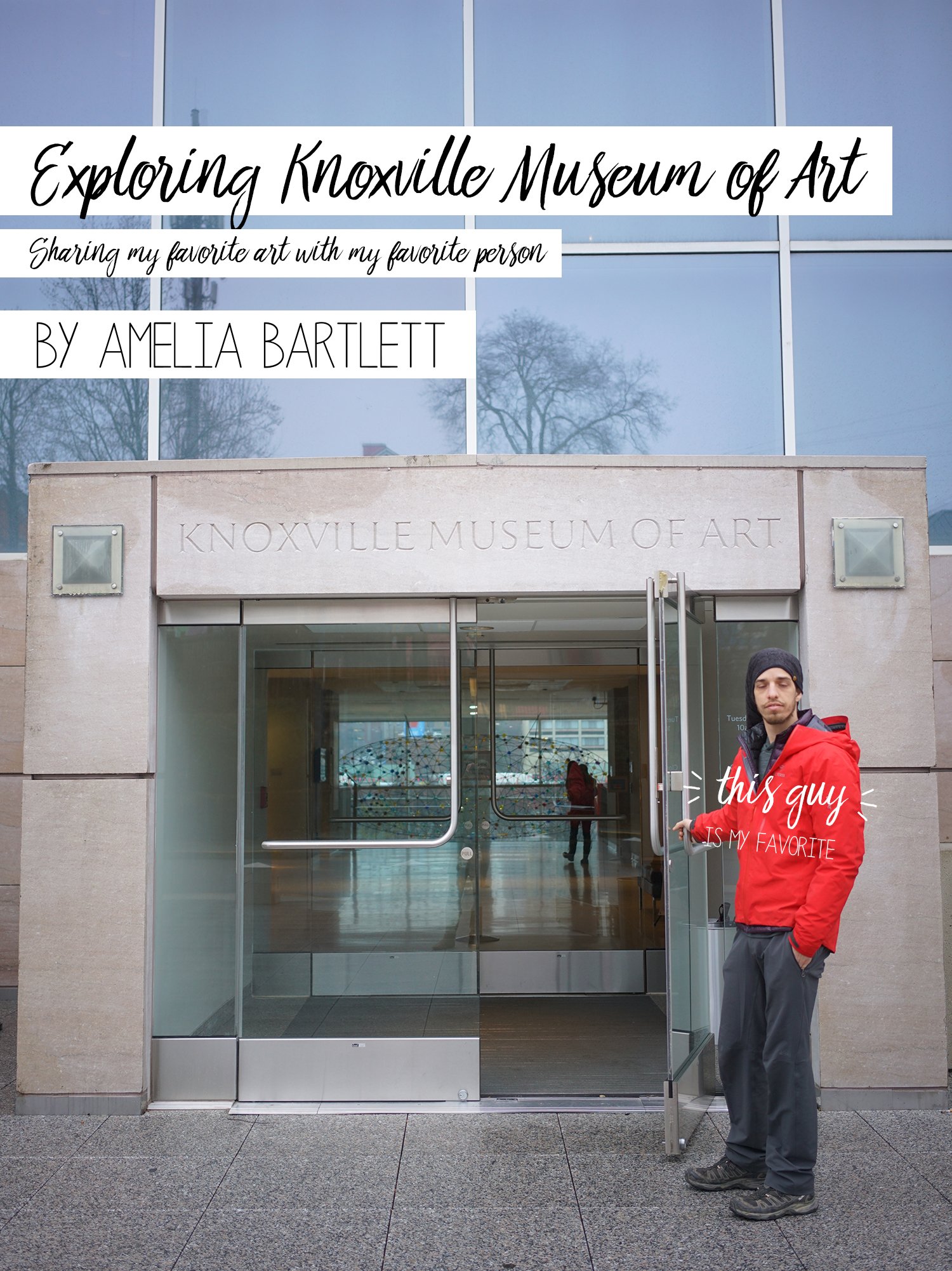
When's the best time to go to the museum? On a rainy day. There's nothing pulling you to be outside, enjoying the fresh air. Instead, you can be cozy, walk slowly, and take your time with each piece that strikes your fancy.
My beau Alhen and I went to the Knoxville Museum of Art at the offer of a friend who is a docent (tour guide) on occasion. She is multi-lingual, German being her first language, so giving a full museum tour in English has been part of her language practice since moving here. She did a spectacular job on our tour.
We went midday with our rain hoods up and saw that the pink marble building, made from East Tennessee marble, was glistening beneath a light sheen. The building is very modern, built of concrete in four floors, three of which open to the public, with ample glass on either side and a pink marble facade covering the entire building and its surrounding architectural features.
David Jolley: The Circle of Life
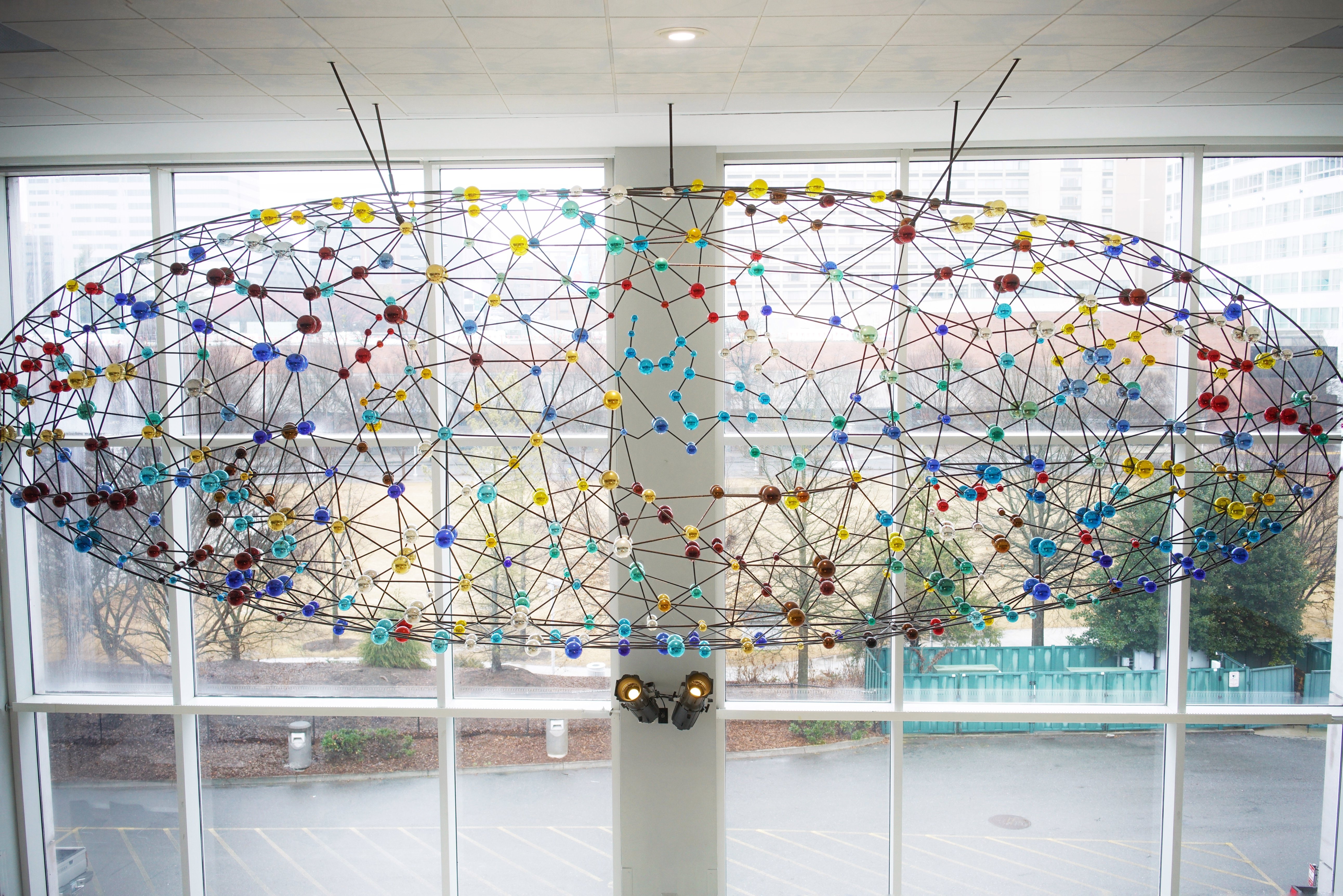
The piece you see above is titled Universe is part of a seven piece expanse titled The Cycle of Life. In seven pieces, Richard Jolley - who is known for his massive endeavors in glasswork, illustrates life through a metal carved forest, carbon cut-out early humans, a Tree of Life featuring glass doves, and the cosmic energy culminating into the Universe (shown above).
While glasswork is not my favorite form of sculpture, I had the opportunity to study this piece for some time, as it is enormous and covers the entire ceiling of the museum presentation hall.
In a small wing off of the presentation hall, a small but diverse glass exhibition was featured, furthering my understanding of the various styles of glasswork.
Higher Ground: A Century of the Visual Arts in East Tennessee
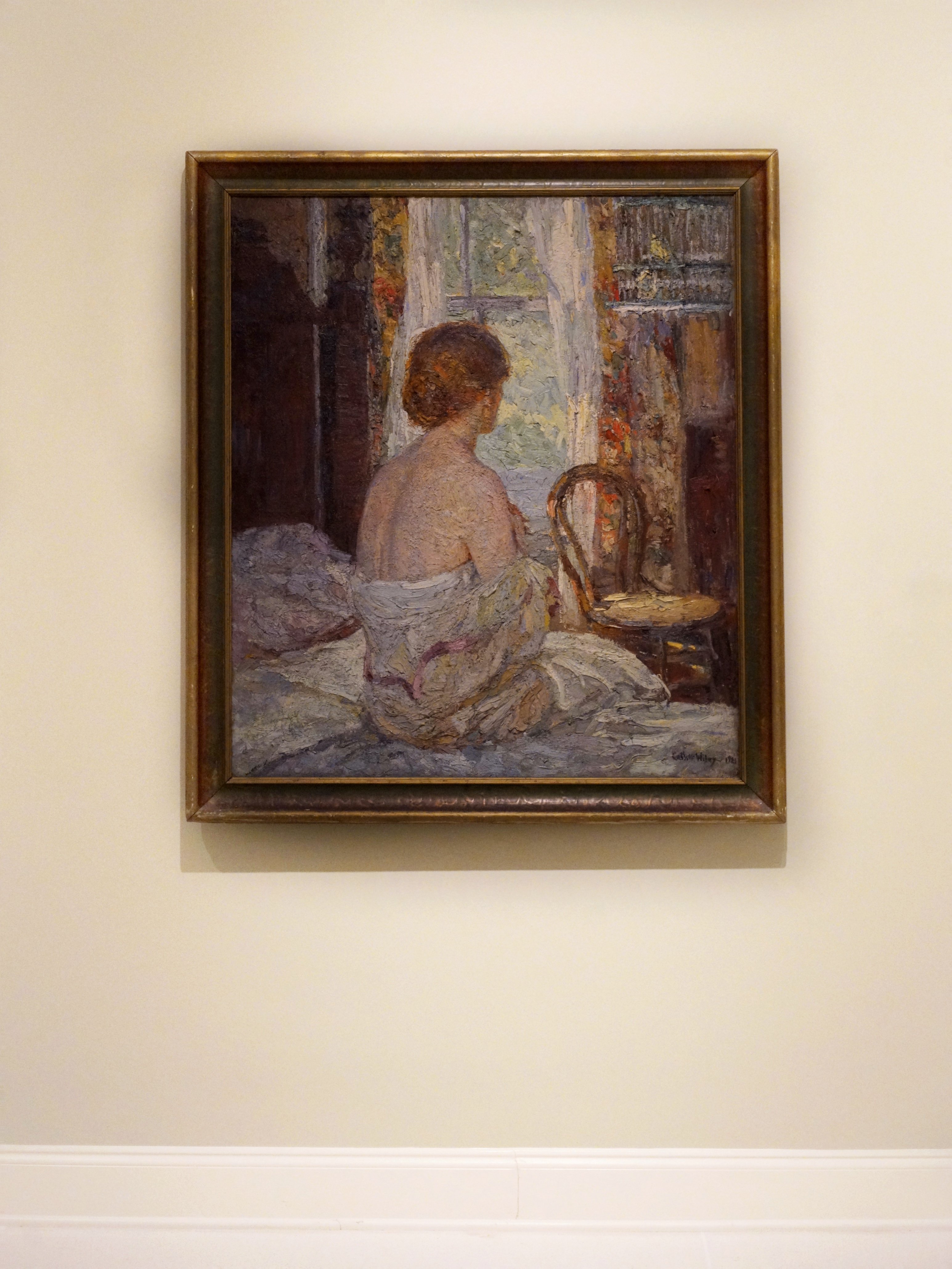
This piece was my favorite of the day, as it was the favorite of our docent and many others who have seen it. This is Morning by Catherine Wiley, an American impressionist who became ill, physically and psychologically, at a young age. Her artwork shows a stark decrease in her health as she transitions from a more traditional impressionistic style in the early 1900s to a darker, moodier, heavier-textured evolution of impressionism, as seen in this piece.
Our docent Eva explained that this piece, and a couple more of hers on-display, were somewhat unique in the sense that they are impressionistic but they are painted indoors. Impressionism was popularly painted outside as the style blossomed around the time that a type of paint was invented that would not dry-up if it was exposed to outside environments. To paint impressionistically indoors further highlights how introverted and reclusive her condition cause her to become.
Recent Art from East Tennessee and Beyond
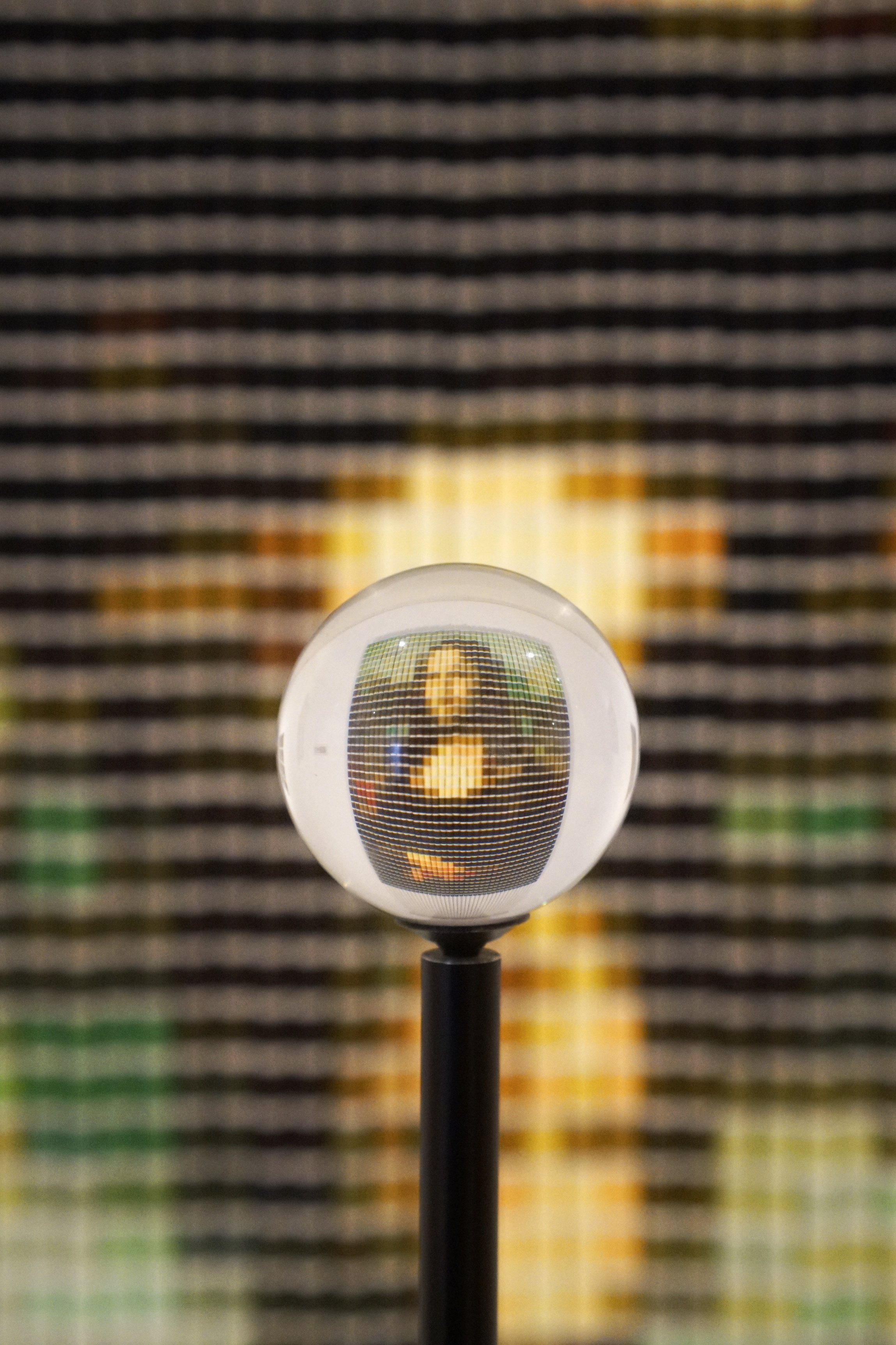
I regret not taking a photo further back to provide more context for this artwork! While you see this tiny Mona Lisa displayed in this glass orb, what is composing the image is a meticulous wall arrangement of spools of thread. More on this piece from the Knoxville Museum of Arts Directory
Devorah Sperber uses groupings of ordinary objects to explore the connections between art and technology, and ways in which visible reality is perceived by the human mind. She became aware that an iconic image repeatedly seen becomes memorized to the extent that complete visual information is no longer needed for recognition to occur. By presenting images in a new medium, size, and orientation, the artist depends on audience participation through what is termed neurological priming, the ability of the viewer to decode visual patterns as an identifiable picture using mental imprints from prior viewings.
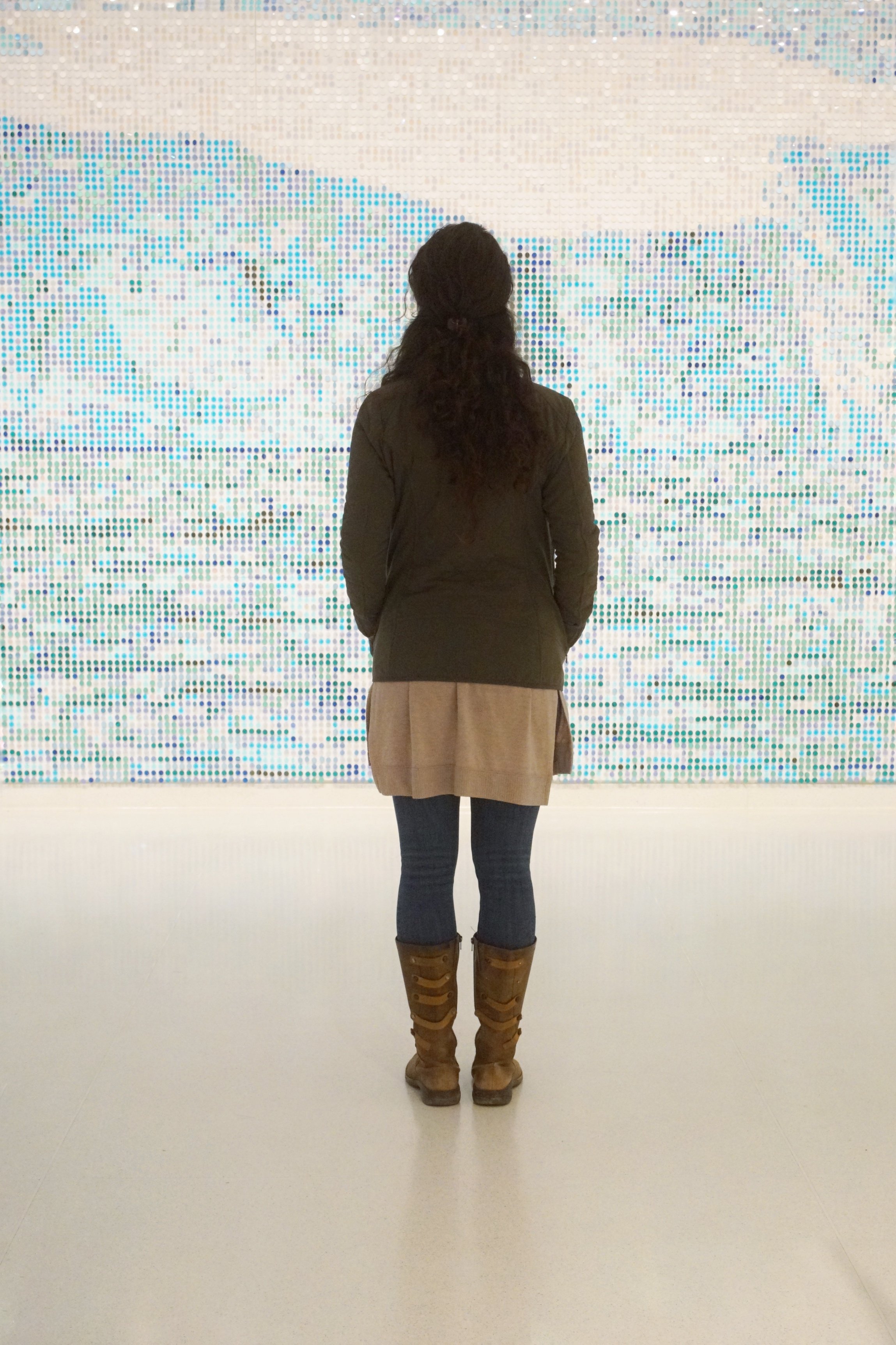
I found this piece by Westergren to be particularly enchanting. Thousands of sequins make up a stunning landscape of an iceberg in the ocean, depicting the artist's Nordic heritage. The further away you stood, the more you could see. The closer you went, the more hypnotizing the shimmering, sparkling sequins became.
What you see here is a skewed, extremely life-like self-portrait of the back of the artist's profile.
Featuring almost 1000 hours of hands-on contact and hundreds of his own strands of hair.
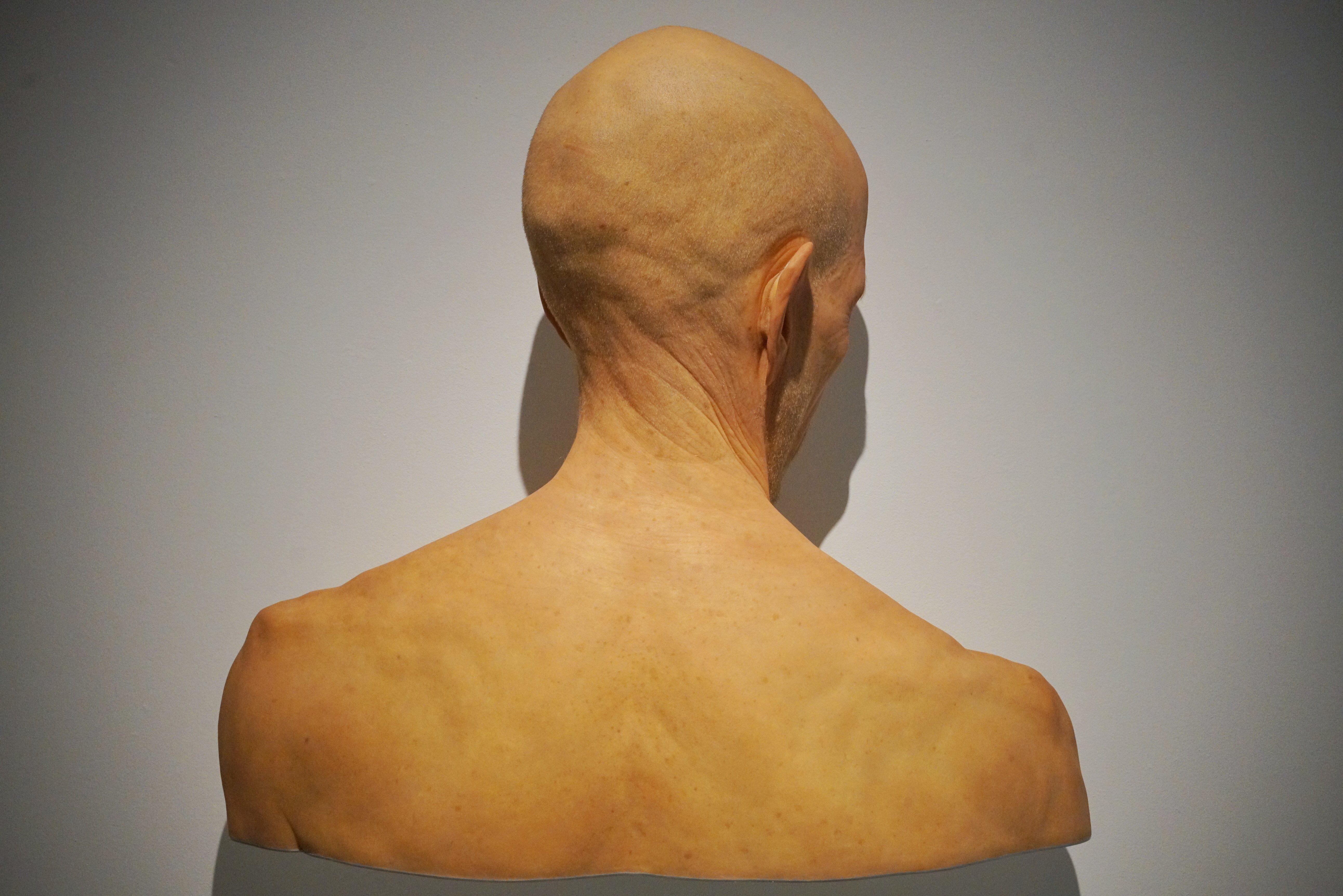
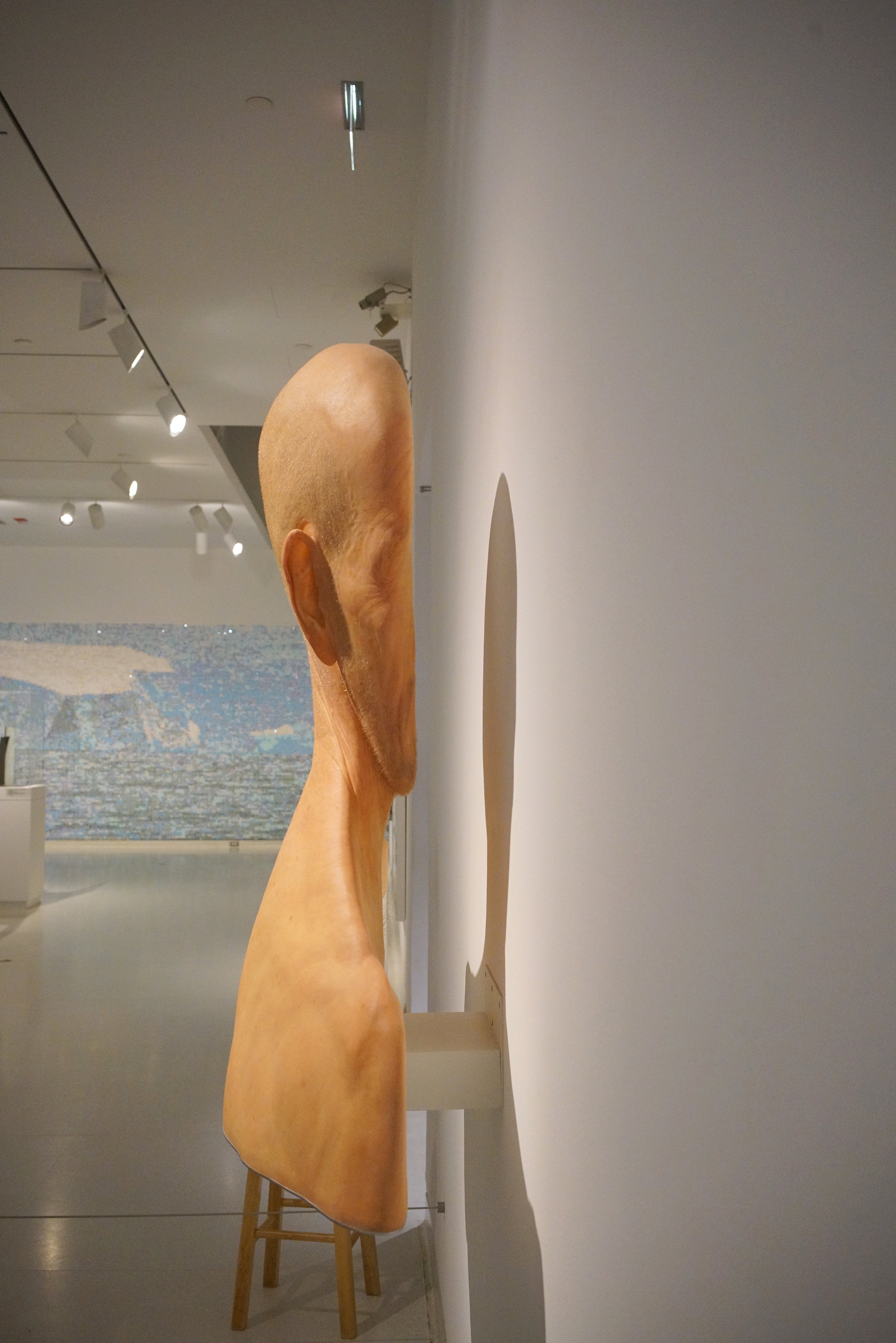
We were all struck differently by this piece. Eva found it very modern and exciting, I found it rather disturbing though I couldn't look away. Evan Penny's experience in costuming, movie-makeup, and sculpture have honed his skills so immensely that this looks like the back of a person's head, simply stretched, and would give any onlooker the willies. More on this piece from the Knoxville Museum of Art Directory
Working in molded and dye-painted silicone, implanting real hair one strand at a time, Evan Penny makes figures (most often head-and-shoulders busts) at twice life size or larger. Oddly, the closer one gets to this work, the closer one looks at the details of Penny's work, the more real it appears. Penny constructs molds for the silicone by modeling clay by hand, a technique he also uses as an artist who makes props for movies. This work, a self portrait, shares with other work by Penny a sensibility that goes beyond just technological virtuosity. Through the painstaking creation of scars, blemishes and other imperfections of the body, Penny investigates human corporeality and fallibility.
#If you have the opportunity to experience a docent tour at a museum - even the one in your hometown you've visited numerous times - please do so.
It was a tremendous experience to have a volunteer who was even more passionate than us about enjoying an afternoon at the museum. She knew the pieces, the artists, the methods and intent behind the curation of the exhibits, and kept us engaged with conversation-provoking questions.
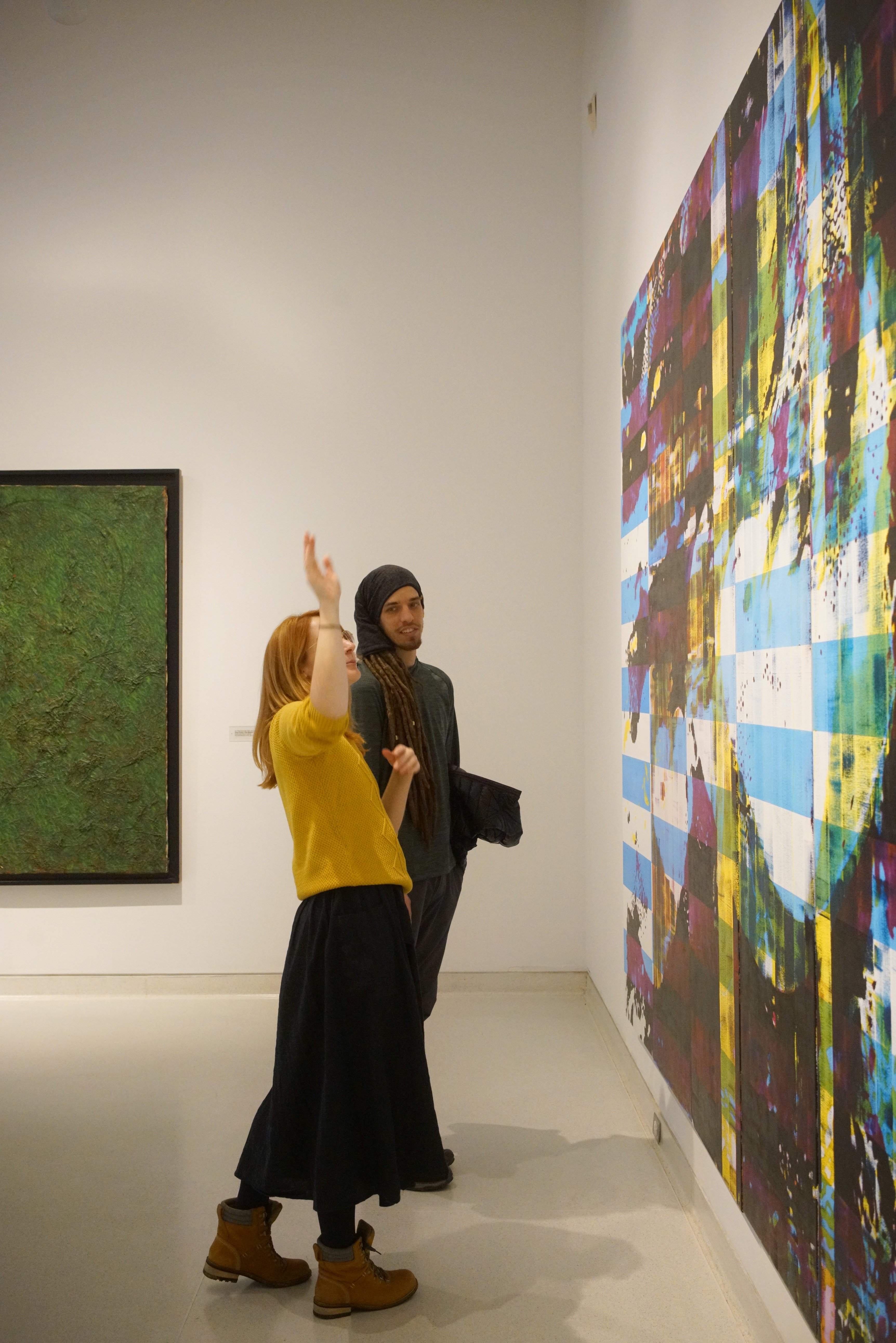
Press Ahead: Contemporary Prints Gifted by Helen and Russell Novak
Upon approaching this section, Eva invited us to explore the rooms and view each of the pieces - briskly - and choose our favorite and our least favorite. Alhen and I split in different directions and this is what I found.
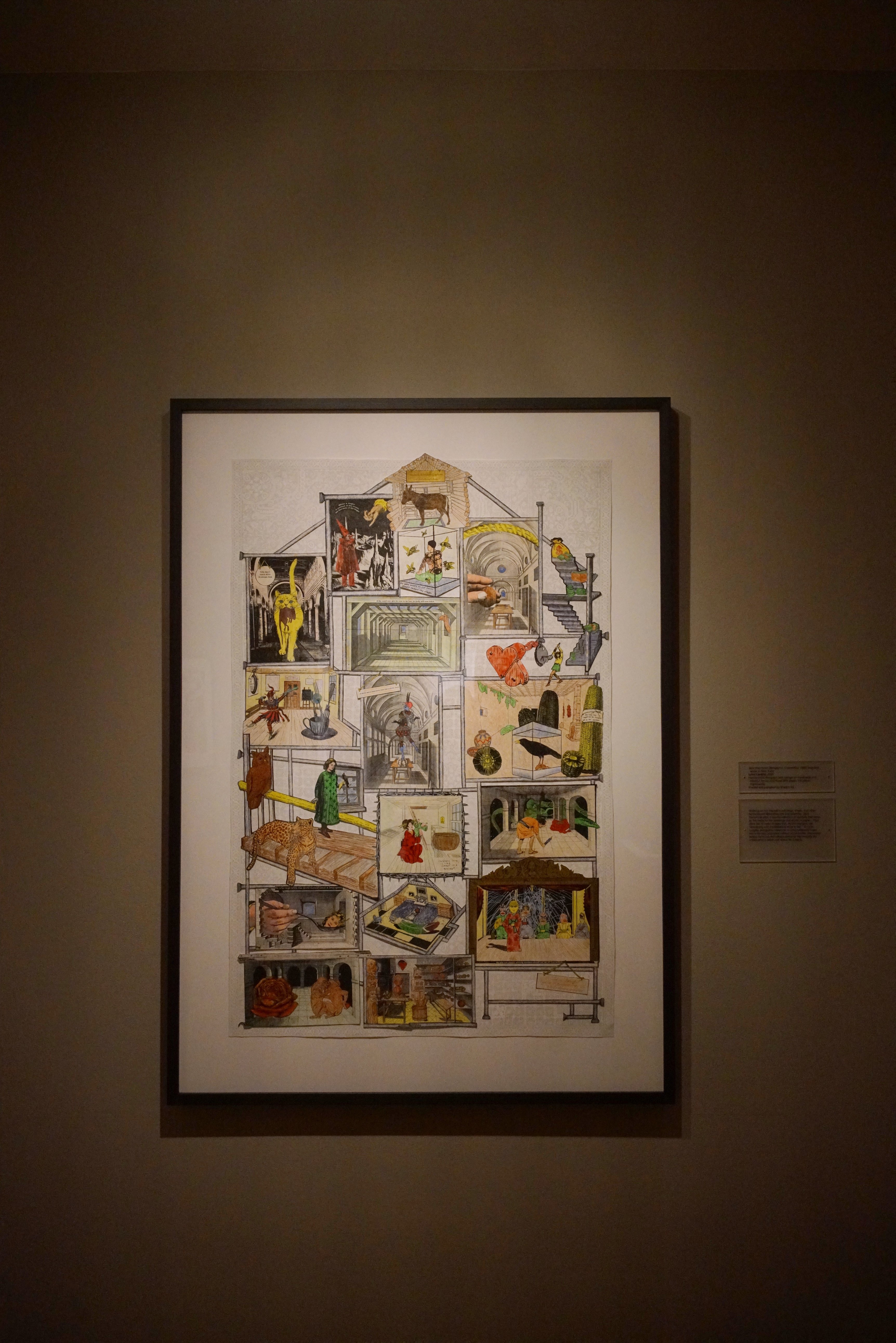
Love Laughs by Jane Hammond
This piece is my favorite of the whole exhibit. However, because I'd only perused it briskly, I barely saw each of the ornate details that made it so special. This piece is a hand-colored lithograph collage, crayons as the primary color medium that features crudely illustrated wives' tales in each section of a scaffolding-structured house. It's entertaining, incorporates multiple mediums/artistic styles, and I'm sure if I spent even more time with it, I'd discover deeper themes amidst those rooms.
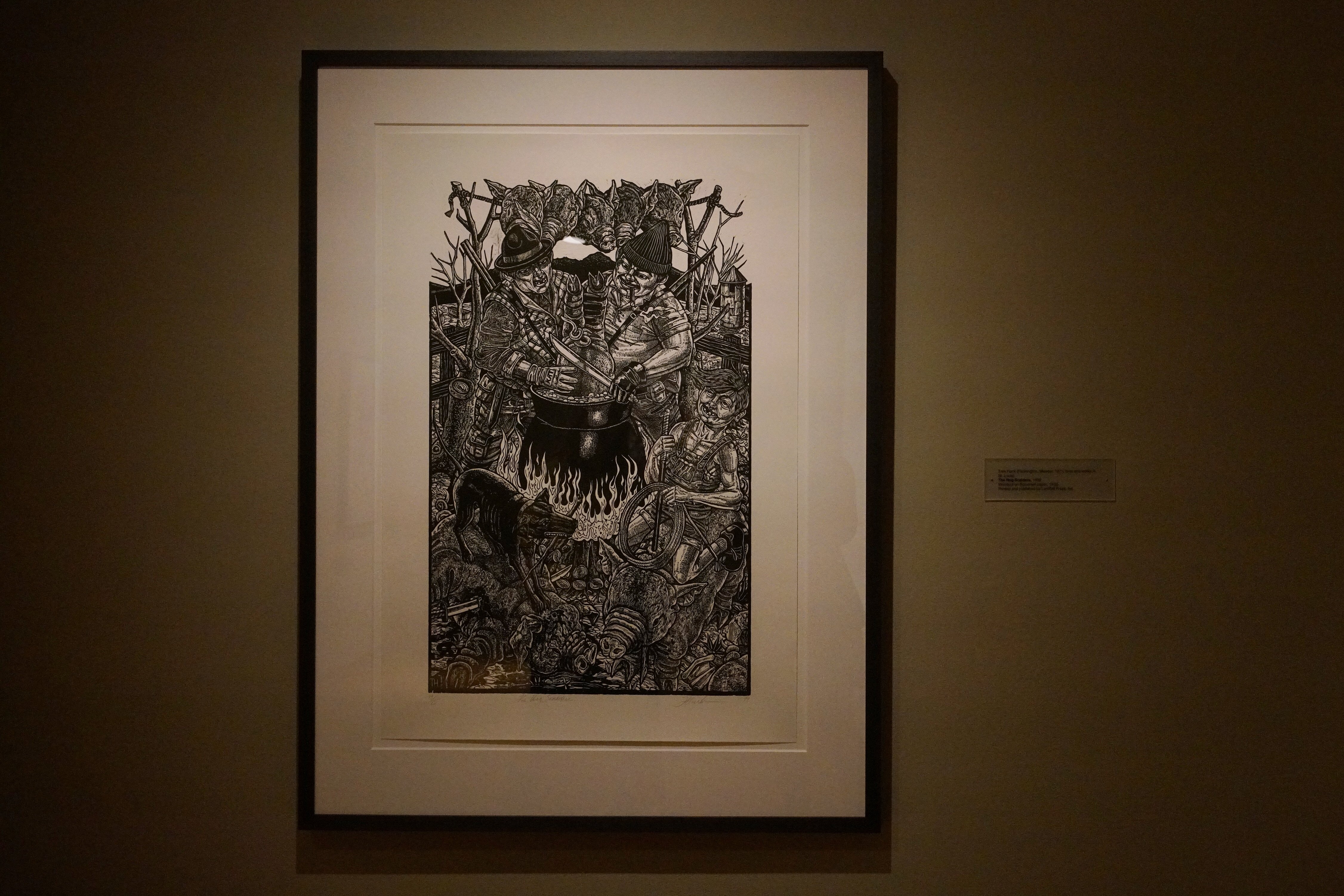
Decapitation Nation by Tom Huck
Instead of photographing and sharing my least favorite piece, I chose to share my second favorite. Woodcut prints with their stark lines, monochrome drama, and high contrast seem reminiscent to Medieval print methods that further influenced the early-Pilgrim printed literature. Mainly, that of the Salem Witch Trials & burnings. This piece is a bit gruesome but is humorous in its depiction of ignorant, pointless violence.
Further reading if you'd like to learn more about Medeival woodcut history.
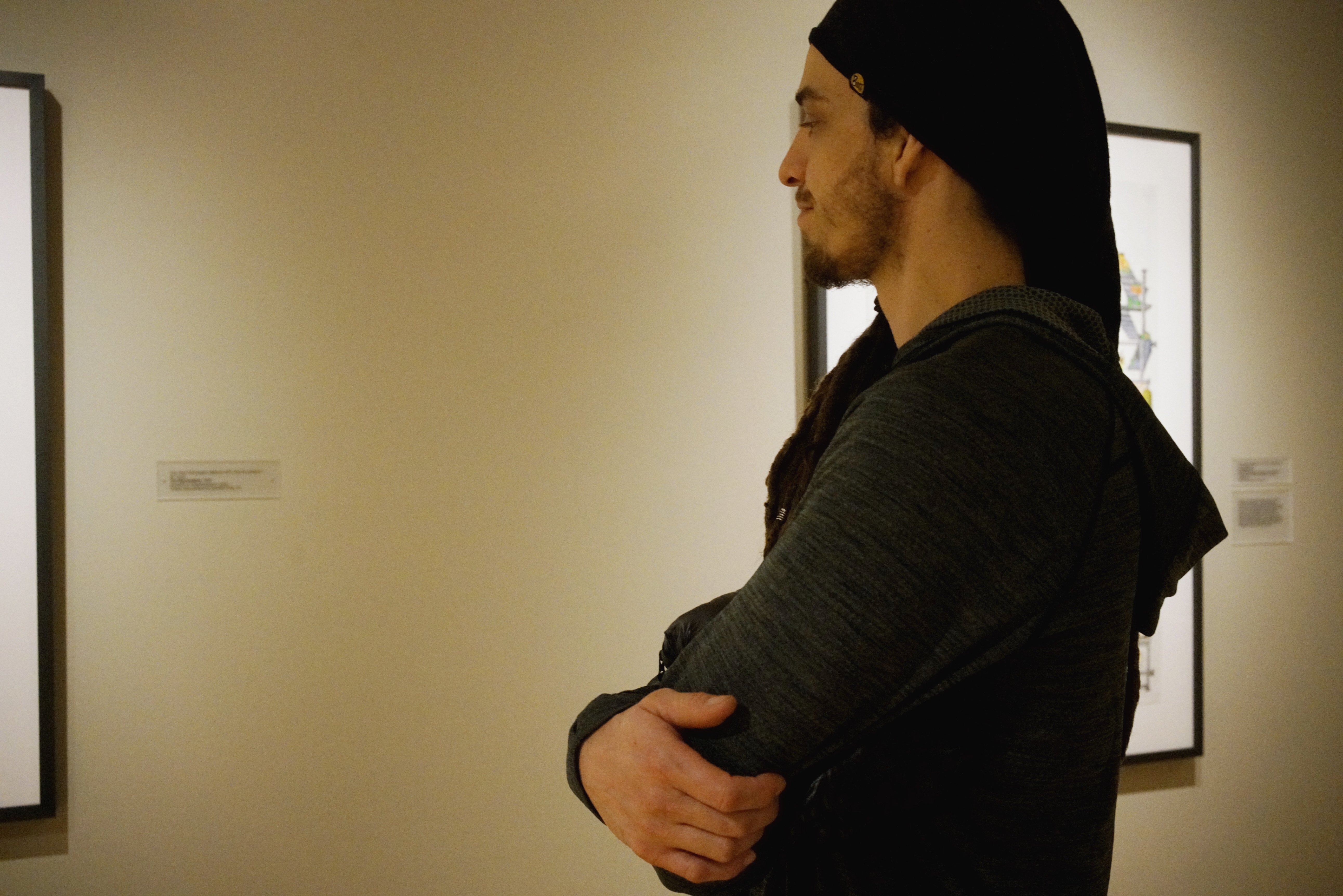
It was a pleasure to spend the afternoon enjoying art with my love, discussing our favorite pieces, our favorite styles, and learning a bit about each others' tastes. Lately, we've found that we fall into the same habit of "Netflix + (snacks, dinner, knitting/phone-ing, etc) as opposed to spending intellectually rich time together. This doesn't mean we're giving up Netflix + Chill for good, but rather is an opportunity for us to get to know each other and ourselves through more intentional activities.
What are you favorite date activities?
Share with me in the comments below so I can get Alhen + I out of the Slow Rolling Home and out into the world.

Hi, I'm Amelia! It's nice to meet you.
I'm a writer, minimalist, tiny home dweller, and maker living in East Tennessee, USA. My blog has lived at www.amelia-bartlett.com until I discovered Steemit, where I now post most of my work. To learn more about me, check out my introduction post, get up-to-date on my school bus tiny house conversion, and follow me for articles on slow living, sustainable fashion, self-expression, and quality curated resteems!
Proud member of

banner by @bearone




